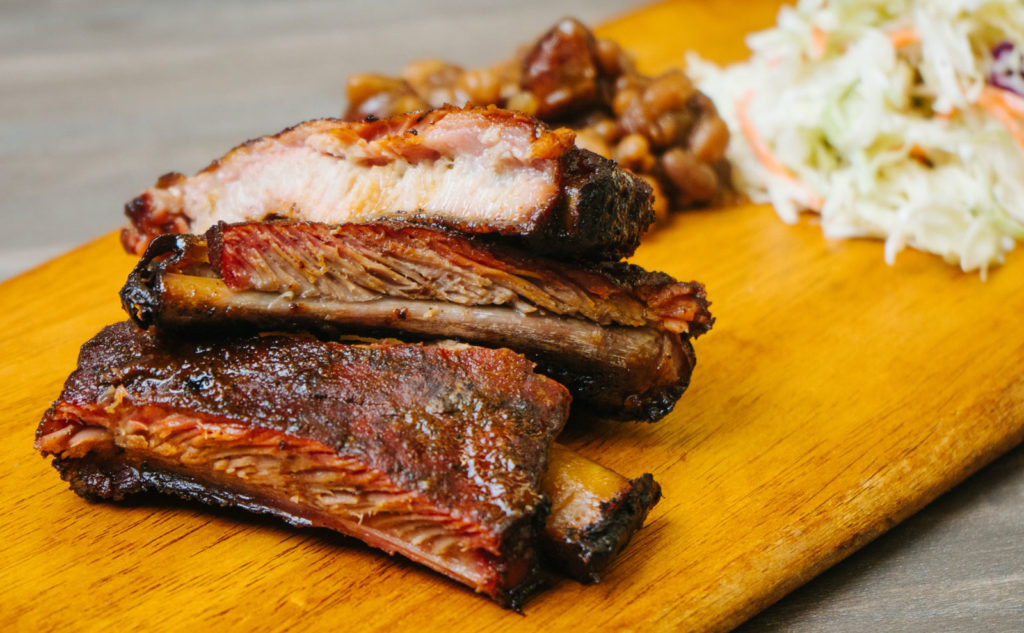At Blister’s BBQ, we can tell the difference between quality meats and not-so-quality meats. And when it comes to taste, we know that there is no substitute for a great cut. Which is why we pride ourselves on having the best cuts of meat available. Our pulled pork and bacon is from high quality stock, and we know a thing or two about pork cuts. Here, we give you our guide to pork cuts. We teach you how to tell if it’s quality and what we use to provide you with the best barbeque.

How to Judge a Cut of Meat
You can judge the quality of your cut by the USDA classification. We suggest you shoot for either Prime or Choice cuts of meat. These are the most expensive cuts but the flavor is worth it. Judge your meat by the fat content. If the meat has a high amount of fat, it will have a high level of flavor. Next check that the meat is pink/red and firm. Soft or pale meat is a sign that it is either old or low quality. At Blister’s we aim for the best quality meat available, which is why our cuts and sandwiches taste fresh and full of flavor.
Pork Belly
This cut comes from the flesh surrounding the stomach and on the underside of the belly. Pork belly is saturated with fat and tender meat, which makes it juicy and flavorful. Pork belly is often served fried and as a side at Asian food restaurants, where it can be very tasty. But it’s most common to cook pork belly into bacon. Which is what we use it for at Blisters to top our burgers and sandwiches.
Pork Loin
Pork loin comes from a lean, less fatty section of the pig. It is very low in collagen, but still tastes great when cooked properly. It’s important not to overcook pork loin. Because it’s such a lean cut of meat, it can often become dry or flavorless if cooked too long. You can often buy cuts of pork loin as pork roasts or loin chops. The best cut from pork loin is called tenderloin, which is an extremely succulent and flavorful cut of pork. This cut can cost a bit more, but the taste is worth it. While we don’t use pork loin at Blisters, we’d highly recommend it to anyone looking for a good cut of pork.
Ham
Ham comes from the well muscled top part of a pork leg. The muscles in a pig’s leg work hard to carry around its full weight, so the ham contains more collagen than other parts of the pig. The collagens melt away through proper cooking, but this cut does take longer to prepare than less worked meat. At Blisters we slow cook our ham in a smoker rather than grill or barbecue it. The results are a rich and savory cut of ham which we slice into a delicious sandwich.
Pork Ribs
Pork ribs have less meat than other portions of the pig. But the ribs are also high in collagen. If cooked for a long time at a slow temperature, the ribs become so tender the meat practically falls off the bone. However, you need a lot of patience to cook ribs. If you have never tried our smoked ribs here at Blister’s, you are missing out on a real treat. We also highly recommend pork ribs to anyone who knows how to properly prepare them.
Pork Shoulder
Pork shoulder, or pork butt, is the most well-worked muscle in the pig. Which means it also contains the most collagen. Cuts of the shoulder include shoulder chops and shoulder roasts. These cuts might be seared, grilled or pan fried. Each of which is delicious when cooked right. At Blister’s, we prefer to slow cook our pork shoulder. Cooking a cut of meat for a long time at a slow temperature melts away the collagens and leaves a full flavored, tender result. We use slow cooked cuts of pork shoulder and pork butt to craft the delicious pulled pork we use in our sandwiches.
